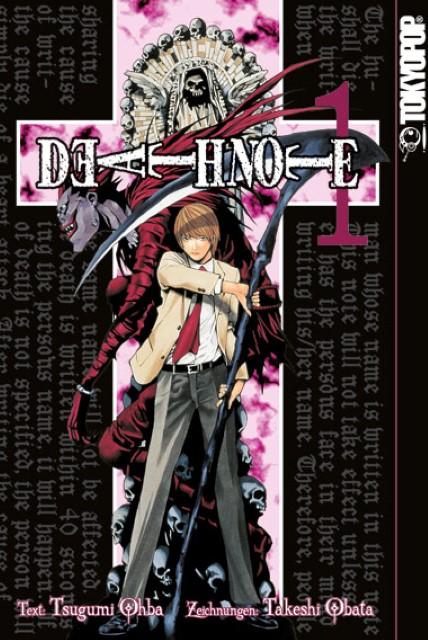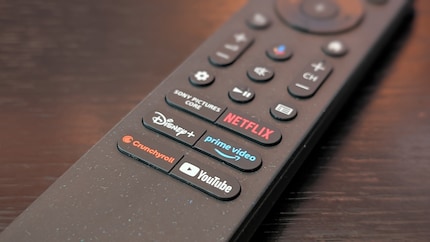

Anime over Hollywood: how Japan is redefining storytelling
For a long time, the West considered anime to be kids’ stuff. Today, it’s global pop culture. From streaming platforms to cinemas, bookshelves to The Oscars, this Japanese medium is taking over the world. And it’s no coincidence.
Recently, I was in a bookstore. As I was browsing the latest releases, my gaze fell on a huge shelf full of mangas. Solo Leveling, Jujutsu Kaisen, Blue Lock, Gachiakuta – all neatly arranged, prominently placed. Gathered in front of the shelves were three teenagers, a couple in their mid-twenties and a man with hair greying at the temples, maybe in his late thirties. All of them browsing, rummaging, comparing. «What’s happening?,» I thought to myself
When did manga and anime go from being kid’s stuff to a being a cultural movement?

I, for one, spent a long time thinking of anime as children’s entertainment. When I was about ten, my eyes would light up over Pokémon, Dragonball and One Piece. As I got older, anime disappeared from my day-to-day life. In my early 20s, people I knew tended to make fun of it. But today? It feels like half the world watches anime. Nobody’s shrugging it off anymore, that’s for sure.
In the past, that wasn’t the case. When Spirited Away became the first anime to win the Oscar for Best Animated Feature in 2001, it was an anomaly. A milestone that didn’t truly make waves until years later. However, since Parasite won the Oscar for Best Picture in 2020 and Squid Game became a worldwide phenomenon, it’s become clear that good stories no longer need a Hollywood label to be well received within global pop culture.
There’s no doubt that this change of perspective has played out to anime’s benefit. In the West, the medium is becoming increasingly mainstream. But don’t just take my word for it. The figures tell the same story.
Anime, the new streaming gold
Netflix alone provides impressive evidence of the anime boom. According to figures published by the company, more than half of its subscribers worldwide watch anime. To be precise, that’s around 150 million households, or 300 million people. Last year, Netflix reported that audiences streamed animes around one billion times – three times as often as in 2019.
It’s especially striking that over the course of the year, 33 different animes appeared in the top ten most-watched non-English titles globally.
Netflix has responded to this with major investment, both in original Japanese productions and in anime-inspired series from the US, such as Castlevania and Blue Eye Samurai. Even major live-action adaptations such as One Piece or Avatar: The Last Airbender serve as gateways for anime to reach a wider audience. There are also self-produced dubbed versions in up to 33 languages – a clear sign that Netflix has stopped regarding anime as a niche, and instead considers it a central pillar of content for the global market.
However, Netflix isn’t the only one riding the anime wave. Specialist platform Crunchyroll is growing rapidly too. Between 2021 and 2024, the number of paying subscribers on the site tripled from five million to over 15 million. With that, Crunchyroll became not only the largest pure anime streamer outside Japan, but also one of the fastest growing streaming services worldwide. Alongside Netflix, it now controls more than 80 per cent of the international anime market.
In fact, Wall Street analysts say Crunchyroll probably doesn’t even see Netflix as competition – rather, it’s a valuable supporter. People who get a taste for anime on Netflix, they say, often end up on Crunchyroll sooner or later. So it’s no surprise that business is booming. Having been profitable for a while now, Crunchyroll is considered one of the most important strategic pillars of its Japanese parent company, Sony.

Disney+ and Prime Video are keen to get a slice of the anime pie too. According to an international survey, 32 per cent of anime fans use Disney+, while 29 per cent use Amazon Prime. Netflix is the only one ahead, with 48 per cent. Disney’s focus is on exclusivity, with series such as Bleach: Thousand-Year Blood War and Star Wars: Visions firmly tied to the platform.
In the US, Hulu (part of Disney+ in Switzerland) is reinforcing this course. Anime accounts for around 12 per cent of the platform’s streamed content, compared to just under seven per cent on Netflix. Most recently, its anime presence was given a boost by Predator: Killer of Killers. Reportedly, director James Cameron is even pondering animated Avatar spin-offs for Hulu.
Anime in cinemas: from event to permanent fixture
Streaming may be the driving force behind the anime boom, but the medium’s surge in popularity is impacting cinema too. And what an impact it is.
For a long time, anime films were a marginal phenomenon in the West. You’d maybe get one Ghibli event a year, a Pokémon premiere if you were lucky, and that’d be it. Today, animes regularly make it to the big screen, filling theatres and attracting an audience that goes far beyond cosplay-loving Gen Z fans.
This is clear when you look at the figures. Demon Slayer: Mugen Train grossed almost 500 million dollars worldwide – more than any other film released in 2020, the year of the pandemic. In North America, the film grossed almost 50 million dollars and became the second highest-grossing Japanese film of all time.
Jujutsu Kaisen 0 (2022) and Dragon Ball Super: Super Hero (2022) were almost as successful, raking in 34.5 million and 38 million dollars respectively in the US alone. In comparison, as recently as 2015, it was considered a sensation when an anime broke the ten-million mark. Today, this is barely enough to get a cursory mention in the specialist press.
However, this new self-assuredness is also evident outside of «shōnen» battles. Studio Ghibli’s The Boy and the Heron brushed Disney and other platforms aside to take home the Oscar for Best Animated Feature in 2024. What’s more, Suzume, one of the most celebrated films by Japanese director Makoto Shinkai (Your Name), grossed over 10 million dollars in the US and more than 320 million worldwide.
What used to be considered «event cinema for nerds» is now an integral part of the international cinema calendar. Distributors such as Crunchyroll and GKids have gone from releasing anime such as Haikyuu!!! in cinemas selectively to doing so with well thought-out launch strategies. They often release the original version and dubbed versions simultaneously, organising previews, merchandise and targeted marketing.
And it’s all paying off. If you go to the cinema today, there’s a good chance that an anime will be on the programme alongside the Marvel and Pixar fare.
Manga boom: more and more comics suddenly available in Japanese
The success of anime in cinemas and on streaming platforms has also changed the book trade. If you take a stroll through the comic department at your local bookstore, you’ll see fewer western superheroes and more manga-stuffed shelves. Ranges featuring titles such as Death Note, Spy x Family, My Hero Academia and One Punch Man. Just a few years ago, you would’ve needed to go to a well-stocked comic book shop for that.
In the US, the largest comic market in the Western world, manga has turned into a dominant force. Sales figures exploded in 2021, with over 24 million manga volumes sold. That’s 160 per cent more than in the previous year. Series such as Kaiju No. 8 or Solo Leveling ruled the roost on the bestseller lists, often with several volumes at the same time.
In Europe, it’s a similar story. France, the nation of «bande dessinée» comics, which have always appealed to adults too, now ranks manga as the second most important form of publication in the entire book market. In Switzerland too, more recent manga series such as Dan Da Dan or The Apothecary Diaries regularly make it onto the general bestseller lists – and not just the ones for comics.
Interestingly, the boom is being driven by new target groups as well as new readers. Even in the West, manga is no longer just a male-dominated, teenage phenomenon. It now also appeals to young adults, women, queer communities and people in general who’ve never felt a connection to western Marvel or DC comics.
It’s not a trend, it’s a sea change
Perhaps what we’re experiencing isn’t just a boom, but the beginning of a new era. In the West, anime has long since shaken off its image as a nerdy niche or as a set of Far East cartoons mostly associated with shows for kids and teens such as Heidi or Mila Superstar. Today, it’s a global storytelling medium – more diverse, relevant and ubiquitous than ever before.
I write about technology as if it were cinema, and about films as if they were real life. Between bits and blockbusters, I’m after stories that move people, not just generate clicks. And yes – sometimes I listen to film scores louder than I probably should.
Interesting facts about products, behind-the-scenes looks at manufacturers and deep-dives on interesting people.
Show all



